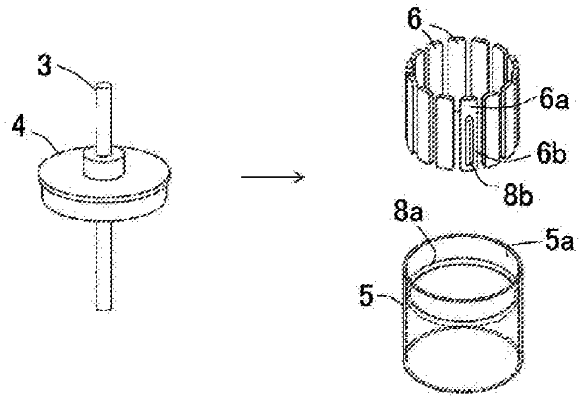| CPC H02K 1/28 (2013.01) [H02K 1/278 (2013.01); H02K 1/2791 (2022.01); H02K 15/03 (2013.01)] | 9 Claims |

|
1. A rotor comprising a plurality of flat plate-like magnets divided in a circumferential direction at a predetermined interval at a circumferential surface of a cylindrical rotor yoke, each of the flat plate-like magnets being a rare earth magnet with a rust-proofed surface, wherein
a first bonding part coated with a first adhesive curing in a predetermined time in a circular manner at the circumferential surface of the rotor yoke and being an ultraviolet-curing adhesive or a combination of an ultraviolet-curing adhesive and an anaerobic-curing adhesive and a second bonding part coated with a thermosetting second adhesive taking a longer curing time than the first adhesive but having a higher bonding strength are formed next to each other or partially overlapping each other at a bonding surface of each flat plate-like magnet, using a plurality of adhesives having different curing conditions, and an adhesive layer is formed, using a void formed between a curved surface of the rotor yoke and a flat surface of the flat plate-like magnet as an adhesive reservoir of the first adhesive and the second adhesive, and
each partition part that partitions the flat plate-like magnets from each other in the circumferential direction is formed by the curing of the first adhesive including the adhesive reservoir, and the plurality of flat plate-like magnets arranged at the circumferential surface of the rotor yoke are partially bonded to the first bonding part and positioned in a radial direction and in an axial direction, and the plurality of flat plate-like magnets are bonded and fixed to each other at all of the first bonding part and the second bonding part by the thermosetting of the second adhesive including the adhesive reservoir while the plurality of flat plate-like magnets are partitioned from each other at a predetermined interval in the circumferential direction by the partition part.
|